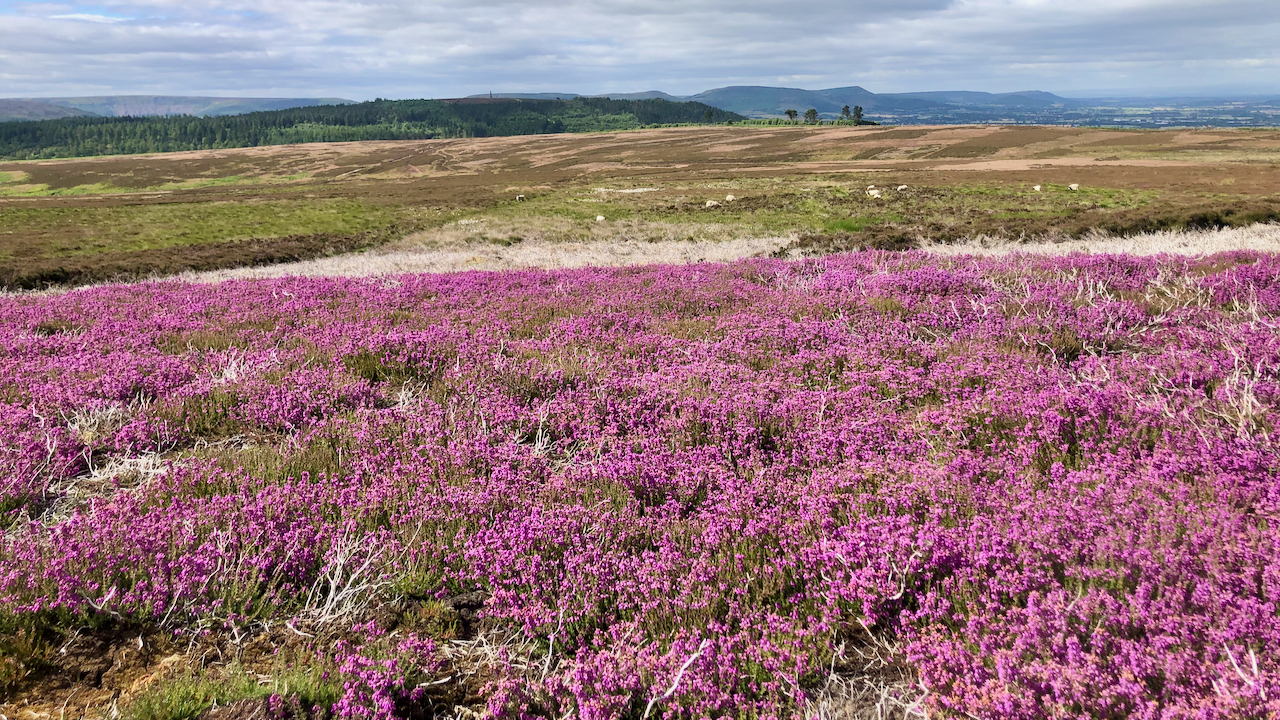The moors will soon be a profusion of lilac with the blooming of the Ling, but for several weeks now the deeper purple blaze of Bell heather has been taking the glory.
This swathe of Bell heather is the largest I’ve seen. Normally it prefers to grow in small clumps on drier ground, the tops of crags, the banks of tracks and the like.
I must admit I prefer the richer colour of Bell heather rather than the delicate lilac of Ling.
Bell heather (Erica cinerea) and Ling (Calluna vulgaris) are two of the three heathers found on the moors; the third being Cross-leaved heather (Erica tetralix), which I saw flowering early last month at Bridestones.
There is actually a record of another heather on the North York Moors — St. Dabeoc’s Heath (Daboecia cantabrica), which is more usually found in the west of Ireland1North (2016). A to Z: a horde of Hs. [online] The official blog for the North York Moors National Park. Available at: https://northyorkmoorsnationalpark.wordpress.com/2016/07/12/a-to-z-a-horde-of-hs/#:~:text=producing%20Handale%20Honey.-,HEATHER%20and%20HEATH,-The%20North%20York [Accessed 5 Jul. 2022]..
This time next month the Ling should be in fully in flower and the moors will be awash with colour, the Heather beetle notwithstanding — 2020 was a particularly bad year.
But although the Ling’s bloom is short lived, the Bell heather’s will persist into September and is often still flowering with the arrival of Autumn frosts.
- 1North (2016). A to Z: a horde of Hs. [online] The official blog for the North York Moors National Park. Available at: https://northyorkmoorsnationalpark.wordpress.com/2016/07/12/a-to-z-a-horde-of-hs/#:~:text=producing%20Handale%20Honey.-,HEATHER%20and%20HEATH,-The%20North%20York [Accessed 5 Jul. 2022].

Leave a Reply